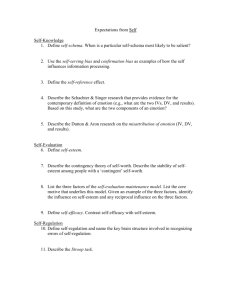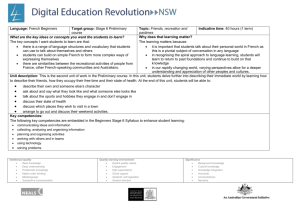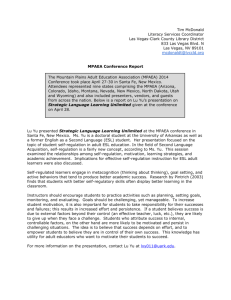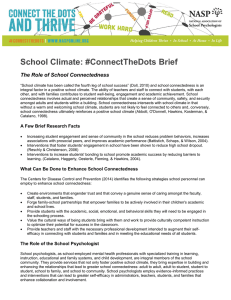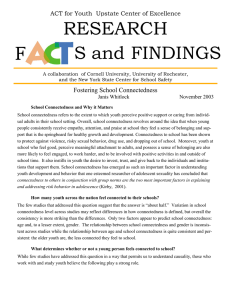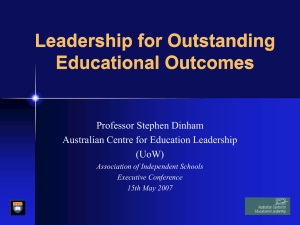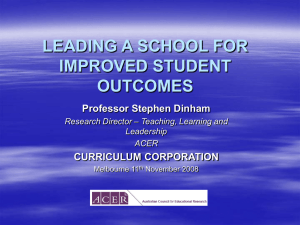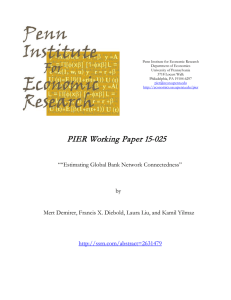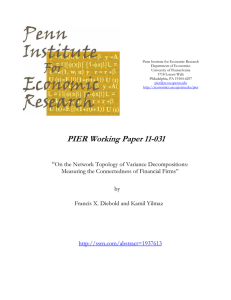Effective Quality of Teaching Improves Student Teaching
advertisement
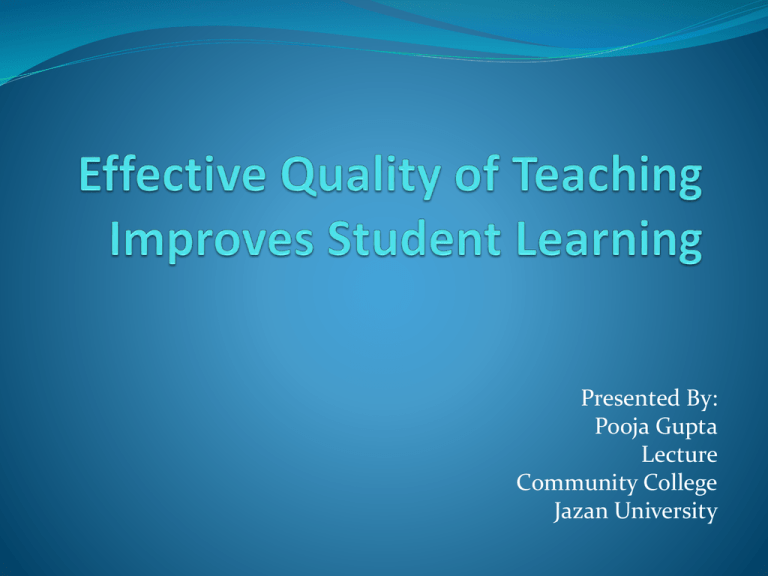
Presented By: Pooja Gupta Lecture Community College Jazan University Abstract This paper focuses on the parameters that need to be considered for providing a quality education to a student. What methodology should be used by a teacher to improve himself/herself which will raise the standard of teaching and last but not the least how these strategies will help to create a learning environment for a student. What is Quality Teaching Quality teaching has become an issue of importance as the landscape of higher education has been facing continues changes and challenges in this modern era i.e. increased international competition, increasing social and geographical diversity of the student body, increasing demands of value of money, introduction of information technology etc[1]. The definition of quality teaching depends on the meaning one choose to give to the word quality. Quality can alternatively define an outcome, a property or a process. Therefore, it has serveral definitions. Quality –A never ending process of reduction of defects-quality teaching is teaching that transforms students perception and the way they go about applying their knowledge to real world problem and the question arises “Are we doing things right?” Is quality means value for money-quality teaching is stakeholder relative stakeholder inclues students, employers, teaching and non-teachng staff, government and funding agencies, creditors, auditors and the community at large. TAM(2001) also found that all stakeholders held their own view of what quality in education means to them. This proves that quality teaching it seems, pertains to what is taught and how it is taught[2] the content has to be appropriate, proper and aimed at some worthy purpose. Successful teaching is teaching yields the indended learning. Good teaching is teaching that comports with morally defensible and rationally sound principles of instructional practice. Why does High Quality Teaching Matter? For those students who enroll in university level study, the time spent at university (or, in the case of distance learning students, engaged with the university from afar) represents more than just a path to a qualification. The experiences they have along the way also shape their future interests, employment options and desire for further learning. University teachers aim to encourage student achievement, to enable students to become ‘creative and critical thinkers … with the capacity to learn both independently and collaboratively’, and to engender a life-long interest in learning. How teachers can achieve this? understanding the relationship between knowledge and how students learn, and integrating that knowledge into course design and delivery understanding the various contexts and settings in which teaching takes place (e.g. distance or face to face teaching, classroom, laboratory, field setting, practicum) having a mastery of the field of inquiry and its particular concerns and understanding and respecting individual students and student groups and their different backgrounds, needs, values and experiences. Percentage of Achievement Variance Effects of Quality Teaching > 30% Teachers Students Home Peers Schools ~5-10% Principal ~50% ~5-10% Fig.1. Effects of Quality Teaching, Dinham[3] Strategies used by the teacher for creating a learning environment[4] Quality learning environment Focuses on what makes the classroom a place where students and teachers work together productively. The elements Explicit quality criteria Engagement High expectations Social support Students’ self-regulation Student direction Explicit quality criteria Students have a clear understanding of how well the teacher expects them to do something. Students have a reference point to which they can compare the quality of their work. ‘Quality criteria’ tell students what constitutes a good answer or product and how to achieve it. Procedural information tells students what they have to do. Explicit quality criteria Strategies Provide work samples or models. Make statements about the quality of work required often during a lesson. Provide detailed criteria with tasks and explain them clearly. Use the criteria to give feedback on student’s work while they are doing it as well as when it is completed. Engagement Students are interested and on task most of the time. Students are attentive and focused. Students take initiative to raise questions. Students contribute to group tasks. Engagement What are some strategies that you use to engage students? Engagement Strategies Use group work with varied roles for all students so that all will be included. Make the learning meaningful for students by relating it to real life and to issues in which they are interested e.g. youth culture. Provide scaffolding for students who need more support, and open-ended tasks that provide for a range of responses. High expectations Students are given challenging work. Students are encouraged to try hard. Students are encouraged to take risks with the language Students’ work/efforts are acknowledged. High expectations Strategies Identify the prior learning of the students so that the work is appropriately challenging. Challenge your own assumptions – teacher’s expectations for students tend to be self-fulfilling. Encourage students to aim high, not just get by. Always recognise the efforts of students. One-to-one feedback Social support Students feel safe and accepted. Students are encouraged to try hard and take risks in a climate of mutual respect. Effort, participation and the expression of points of view are valued. Social support Strategies Use a variety of collaborative activities. Design flexible learning tasks so that all students can experience success. Always respect, value and incorporate the ideas and opinions of all class members. This is particularly relevant in tasks with an intercultural focus. Allow all students to contribute and collaborate through activities such as think-pair-share and jigsaw. Student self-regulation Students demonstrate self-control and initiative in relation to their behaviour. Students understand and have internalised the standards of behaviour required in the class. Student self-regulation Strategies Ensure activities are purposeful and interesting with clear goals that students perceive to be worthwhile. Encourage students to evaluate their own progress and achievement. Negotiate a shared understanding of classroom behaviour and responsibilities. Student direction Student direction is about students assuming responsibility for class activities by exercising some control over: choice of activities time spent on activities pace of the lesson criteria by which they will be assessed. Student direction Strategies Allow students to choose: how they go about a task e.g. independently, as a pair, as a group how they present their work. Negotiate with students how much time is required to complete their work Let students participate in determining the criteria by which they will be assessed. Significance The elements Background knowledge Cultural knowledge Knowledge integration Inclusivity Connectedness Narrative Background knowledge Knowledge gathered in: previous lessons personal lives. Cultural knowledge Linking the lesson content to one or more specific social groups. Linking the lesson content to one or more specific social groups. Valuing Accepting Cultural knowledge Examples •When teaching a unit on birthday celebrations, discuss how different students celebrate their birthdays at home, or if there are other celebrations of greater importance. •When teaching food and drink, find out what the typical food items on the table are at dinner time at the students’ homes, and how/when they are eaten. Knowledge integration Taking the pieces of the puzzle and fitting them together to form a bigger picture, by linking to other subject. Inclusivity Key questions: Are all students of all social groups included in the public work of the class? Are the contributions of all students taken seriously and valued by their classmates and the teacher? Inclusivity Examples Vary the grouping, e.g. individual work, pairwork, friendship groups, ability groups, class surveys (as oral work) Questioning techniques, e.g. teacher to student and student to student, group responses and individual responses, moving from closed questioning to open-ended questioning. Positive feedback to students, including clarification, e.g. “Your pronunciation was spot-on that time”. When correcting a student’s answer, involve the class in practice/feedback. Connectedness Connectedness Examples The use of video learning,games,elearning. Incorporating skills such as numeracy and literacy. Real world skills and tools such as mapreading and the use of ICT play a vital role in connecting what happens in the classroom to the world beyond. Narrative The use of stories or anecdotes to contextualise the learning, making it more meaningful. Personal stories are better remembered by students. Conclusion “Teacher is always a seeder.” Adopt different Teaching and Learning strategies and make learning fun & real. To be a teacher first be a student because they are good learners. References [1]. Henard F. and Leprince-Ringuet S. ,”The Path to Quality Teaching in Higher Education”. StudyMode.com. Retrieved 11, 2013, from http://www.studymode.com/essays/The-Path-To-Quality-Teaching-In1886376.html. [2]. Fenstermacher D G., Richardson V.,” On Making Determinations of Quality in Teaching”, paper presented in Education of the National Academy of Sciences, University of Michigan, Ann Arbor, july 11,2000. [3]. Dinham S., “LEADING A SCHOOL FOR IMPROVED STUDENT OUTCOMES”, presented presentation in ACER under CURRICULUM CORPORATION Melbourne, November 11th ,2008. [4]. Quality teaching in NSW public schools: An annotated bibliography, Published in professional support and Curriculum Directorate,May 2003. Thanks Special Thanxs to Dr. brijesh Kumar, Professor, Lingaya’s University,India
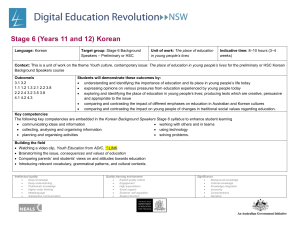
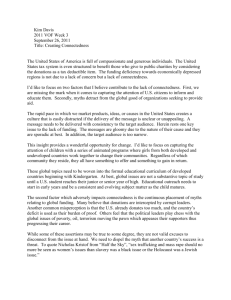
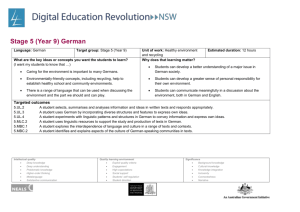

![Mechdyne [Compatibility Mode] - Intranet](http://s3.studylib.net/store/data/008693380_1-c866603ba8a7bd1e33bac559ccc2561d-300x300.png)
